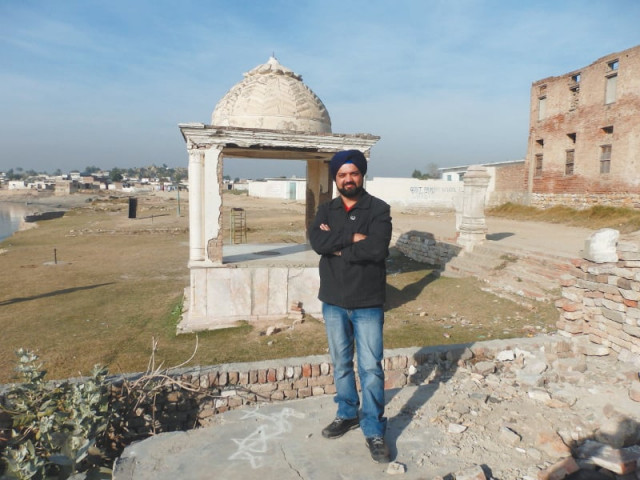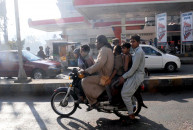A second homecoming: Researcher documents K-P’s Sikh heritage fort by fort
Bansal has documented footprints of Ranjit Singh’s soldiers and administrators across the subcontinent .

Bobby Singh Bansal at the tomb of Akali Phoola Singh next to the Kabul River. The site is where the Battle of Nowshera took place in 1823. The tomb represents where Singh fell and was cremated. PHOTO COURTESY: BOBBY SINGH BANSAL
A chance visit to Lahore in 1989 triggered something in Bobby Singh Bansal’s heart - a desire to learn more about his Sikh heritage.
He started researching about Maharaja Ranjit Singh and his reign almost immediately and then, the more he read, the more addicted he got. His journey took him all over the world from Lahore to London to Texas and after a book, Lion’s Firanghis: Europeans at the Court of Lahore, and documentary Sikhs of Kabul: A forgotten community, he has come back to Pakistan for more. Among other projects, Bansal is also filming a documentary on Sikhs in Myanmar.

Last month, Bansal had been travelling from Jamrud to Shabqadar documenting forts, historical sites and exploring Khyber-Pakhtunkhwa’s Sikh heritage.
Bansal, 45, is a British-born Sikh with a background in business. Although he did not study history at school, he has read and researched his areas of interest extensively. He is currently busy working on another book, this time focusing on Sikh monuments in India and Pakistan.
He believes Khyber-Pakhtunkhwa’s Sikh heritage sites have the potential to bring more than a thousand Sikhs for a visit every year.
“The Sikhs come from all over the world to Hasan Abdal in northern Punjab and Peshawar is just two hours away,” he said, while talking to The Express Tribune. “About 90% of Sikh heritage sites associated with the Lahore Darbar under Maharaja Ranjit Singh are located in Pakistan whereas India only has 10% of them.” He added that these sites could be used to promote tourism in the province.
Bansal has extensively documented and researched footprints of the Maharaja’s soldiers and administrators across the subcontinent and said that most of the heritage sites in the province are well preserved.

While discussing some of his findings, Bansal said that during Ranjit Singh’s rule the whole region between Hazara to Afghanistan was placed under the stewardship of Hari Singh Nalwa from 1834 to 1837.
Discussing the origins of Sikhs in the province, the researcher said they came with Sikh rule and never left again.
According to him, under the Maharaja, there were 78 kacha forts built in the area, including Michni Bara, Shabqadar, Jamrud and Kishan Ghar.
On the banks of River Kabul, near the Pir Sabak village, lies the tomb of Samadhi of Bhai Phoola Singh – an Akali Sikh leader who died in the battle of Nowshera in 1823. Next to the tomb is a building commemorating the Akali leaders - both are in ruins.
Bansal said Sikhs had also built forts in Akora Khattak, Jehangira and Khairabad in Nowshera. “Sardar Lehna Singh Sandhiwalia built the fort in Akora Khattak and while the main structure is there, it has been partially destroyed,” he said. “The Bannu fort is also an important site in the province. It used to be called Duleep Ghar Fort after the last Sikh ruler of Punjab and Ranjit Singh’s youngest son, Maharaja Duleep Singh.” He added that during the British Raj it used to be called Edwardes Fort.

While talking about the Sikh community in K-P, Bansal said that they probably decided to stay back because of a language barrier. He added that unlike the Punjabi-speaking Sikhs who settled across the border, the Pashto-speaking Sikhs would have found it difficult.
Published in The Express Tribune, January 13th, 2014.













COMMENTS
Comments are moderated and generally will be posted if they are on-topic and not abusive.
For more information, please see our Comments FAQ